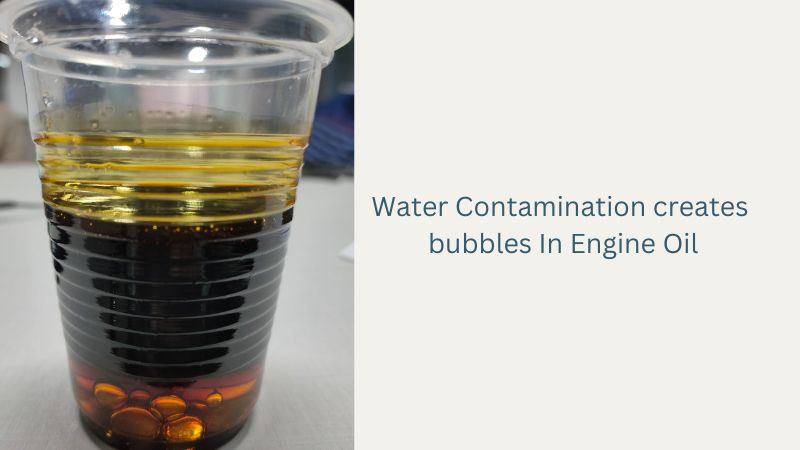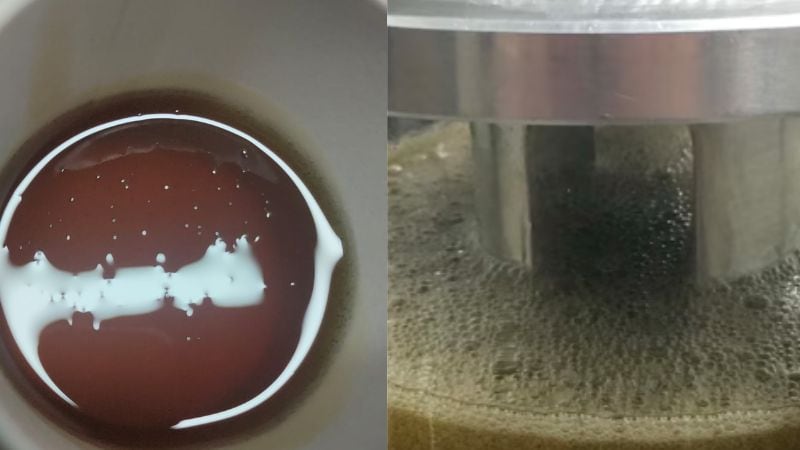After seeing air bubbles in engine oil, if you are confused, we can’t blame you. Actually, oil is the lifeblood of your cars, and performance depends on the oil’s shape and cleanliness.
To check your oil condition, if you frequently use an oil dipstick, there are chances to see air bubbles. You might be wondering what could be causing these; we are here to solve this puzzle. If you are really interested in knowing the causes of bubbles in engine oil, this article is a must-read for you!
Causes of Bubbles In Engine Oil?
You may suddenly see bubbles in the engine oil dipstick. Some common causes of bubbles in engine oil are:
Overfilling the Sump
If your oil is bubbling and hasn’t changed color, it may be that the sump is overfilled. In this case, you can think that the oil is being swirled and aerated by the crank. Accordingly, this can cause significant damage to your engine.
Leak and Contamination
When the bubble or foam is very light in color, it may cause water or coolant pollution. Besides this, If you experience something like this, you may have a leaking head gasket in your engine block.
Check: What Can I do If accidentally Put Coolant in engine oil
In particular, if you find a thick and white foam in engine oil, this could be an indicator. It also means some water from the cooling system through the leaking gasket.

Cold Weather and Short Trips
Your automobile’s engine oil flows through hundreds of tight spaces inside your engine. Every time the oil does this, it takes some air bubbles. In typical weather, the bubbles will only pop to a point.
Nonetheless, when the oil cools, it traps air bubbles and turns them into foam. Usually, if you drive and make short trips in cold weather, your oil will make a bubbling foam.
Other Reasons
A yellow and light foam usually indicates an engine overfilling with oil. Here, the solution is that you should drain some oil from your machine. Too much detergent in the oil or oil additive may cause the oil to bubble a bit more.
Is It Safe To Keep The Dipstick Bubbling After An Oil Change?
You can compare an engine with an internal explosion to a pump using air. A mixture of air must be moved in and out of the explosion chamber to convert heat into motion. It would help if you displaced the lower surfaces of the pistons.
The crankshaft rotation creates noise in your engine. Furthermore, the piston only pushes on one side, and the connecting rods work like it. The crankcase is quite a raging place!
Due to crankcase turbulence, your engine oil becomes foamy as it mixes with the air around it. As a result, you may see bubbles on the dipstick that are perfectly fine until your oil is polluted.
Still, another cause of bubbles could be pollution in your engine oil. In such cases, it is essential to have your car inspected.
Bubbles In Engine Oil Motorcycles?
It’s normal if you notice bubbles in your motorcycle oil. Regular car oil has detergents to keep engines clean. But on a bike, it creates foam, which can come off.
The reason is that the motorcycle oil doesn’t tolerate high altitudes. So, if there are bubbles in your bike engine oil, don’t hesitate. Just wait 15 minutes to cool the engine and get them to stop.
Bubbles In Oil When Drained?
If you drain your oil and make a long drive, it comes out smoothly from the drain plug. The best way to check air bubbles is to observe by quickly pulling the dipstick while running the engine. A small amount of bubbles is normal. But there are a lot of air bubbles you can see if you overfill the crankcase.
Yet, make sure you fix the primary problem before operating the drain and flush. Focus on managing pollutant ingress before resorting to filtration for particulate and water pollution. This is especially crucial in gear oils, where fine filtration can strip additives from the liquid.
Solving foaming problems can be a complicated process. But through elimination, you can identify and correct the root cause.
Why Does My Cooking Oil Have Bubbles?
Cooking oil is also a liquid but doesn’t contain ‘moisture .’Any cooking oil held in the air will foam. This occurs when you are frying the food, and the food moisture naturally starts to settle in the oil.
When you start frying, cooking oil heats up, and moisture begins to foam on the oil surface. Over time the oil has been well used, and the gradual generation of moisture and air takes over the oil. As a result, you can see a bubble on the surface of the oil.

FAQ (Frequently Asked Questions):
Q. What do bubbles on an oil dipstick mean?
There must be a reason if you notice air bubbles in your dipstick. In addition, it would be best if you were a little concerned when you find brown bubbles in the oil. This could indicate that the engine is currently leaking water or some coolant.
Q. What causes engine oil foam?
You may think foam is harmless, but if not accounted for, it can cause severe problems in a machine. There are many causes of foaming. The most common reasons are:
- Water contamination
- Solids contamination
- Excessively deforming additives, either by false formulation or incorrect reformulation of the additive package
- Mechanical problems
- Liquid cross-contamination with the wrong lubricant
- Degraded defoamants (probably because of using overly fine filtration and electrostatic separation technology
- Overfilling of the sump with bath and splash-lubricated compartments
- Fluid pollution with grease
Q. Is it bad if my oil is bubbly?
Yes, but just to a specific extent. High-quality engine oil should not foam and have no bubbles. But due to regular movement in which bubbles are produced within the crankcase, it’s okay for your engine. Anti-foaming agents can prevent foaming in oils.
Final Verdict
In summary, in your engine, air bubbles are caused by many reasons. Ultimately, if the bubbles in engine oil are created because of crankshaft turbulence, don’t worry about it. Generally, because of contamination on the crankcase, the bubbles will make.
Notably, It is easier to detect contamination in engine oil if you are an expert. Ergo, if you can see air bubbles in your engine oil, it’s best to contact a mechanic as soon as possible.
Read Also: How to get rid of condensation in engine oil
